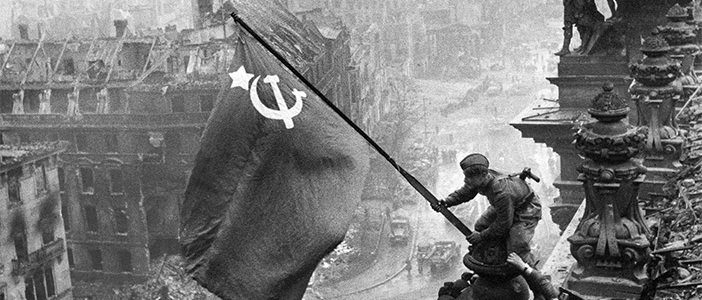Hitler's Last Days: Twilight of the Gods
Posted on 28th September 2021
Just past midnight on 29 April 1945, in the map room of the Fuhrer Bunker, Adolf Hitler married his long-time mistress, Eva Braun.
It came as a surprise to those who knew him as he had never shown any public affection towards Eva and had always refused to contemplate marriage on the grounds that it might diminish his status as Fuhrer though in truth, he had always relished being Germany’s most eligible bachelor.

The 33 year old Eva who enjoyed sports and loved to party neither of which were of any interest to Hitler and whose use of makeup and love of nude bathing simply appalled him was still in many respects his ideal partner. She was a simple country girl who had little interest in politics and rarely expressed an opinion of her own, Instead, she listened in admiring silence whenever he spoke, never contradicted him, and remained utterly devoted to his person. Unlike his General Staff who argued endlessly over the direction of the war she never doubted him. Marriage to Eva would be his reward for her loyalty.
It would also be a nod to the bourgeois respectability he so often scorned but in reality, yearned for and would quash doubts regarding his sexuality that had been circulating for some time. That such things should remain important to him at a time when the global conflict he had unleashed was reaching its climactic denouement and suicide was already on his mind tells us much of the unreality that pervaded the Fuhrer Bunker.
A minor official from a nearby Volksturm or Home Guard Regiment, appropriately named Wagner, who was licensed to perform weddings was drafted in to perform the ceremony and Josef Goebbels and Martin Bormann attended as witnesses.
After both Hitler and Eva Braun declared themselves to be of pure Aryan descent they signed the marriage certificate, Eva nervously starting to scribble her own name before crossing out the B and signing it, Hitler.
Having taken their wedding vows no kiss was exchanged, and the song played to end the ceremony was Blood Red Roses to which Eva joyfully sang along.
Hitler now invited Goebbels, Bormann, and his secretaries Frau Christian and Frau Junge to attend a champagne celebration. He did not himself drink and left party early at 4 am for his private chambers to dictate his Last Will and Testament. Eva did not accompany him.
Adolf and Eva Hitler were to be married for less than 40 hours and the whole affair can be seen either as the comedy of the absurd or a rare moment of normalcy in the madness of the Fuhrer Bunker.
Hitler had moved into the Bunker beneath the Reich Chancellery in Berlin on 16 January 1945, after he had been forced to abandon his East Prussian Headquarters, the Wolf’s Lair.
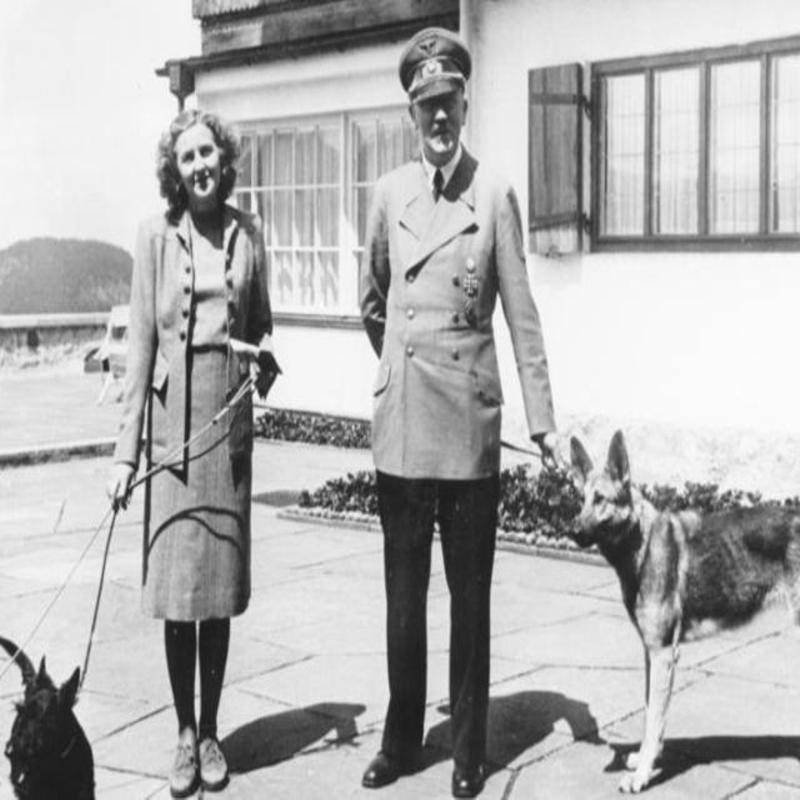
At first, he could often be seen walking in the garden above ground and throwing the ball for his dog Blondi but by mid-March this had ceased as the Russians closed in and the bombardment of the city centre had become almost incessant.
Despite his now subterranean existence Hitler’s routine continued much as before, he rose at mid-day staying up until the early hours and took his meals regularly three times a day, a vegetarian diet of muesli, linseed oil and vegetable juice supplemented by cakes and up to 16 cups of tea a day. Still, no one was permitted to smoke in his presence and he held court as always though by now his conversation would often be laced with stories of his youth and mawkish expressions of regret and betrayal.
The last filmed pictures of Hitler had been taken about a month before his somewhat bizarre marriage to Eva on 22 March when he handed out medals to members of the Hitler Youth and they showed a man visibly older than his 56 years stooped and shuffling and with his shaking left hand kept hidden behind his back.
Shown in newsreels this was the last time the German people would ever see their Fuhrer as he returned to the febrile atmosphere of the Bunker never to re-emerge. There surrounded by the sycophantic and the deluded he fought a very real war with increasingly illusory armies.
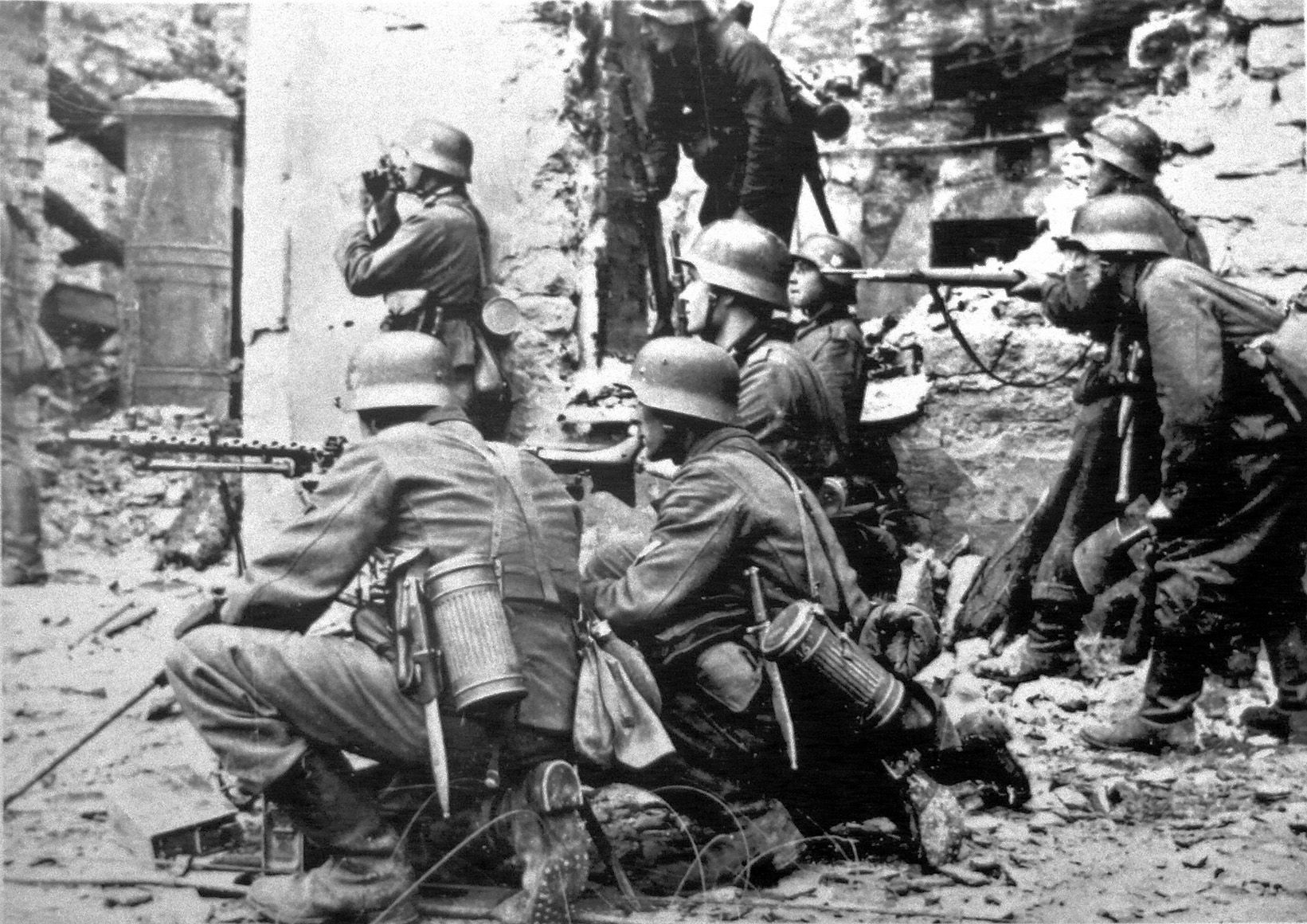
On 21 April, at one of his daily military conferences Hitler ordered German forces in the area of Berlin to counterattack the two massive Russian armies now converging on the city and threatening to surround it. The northern attack was to be led by General Steiner who had only two battalions of the 4th SS Police Division, brave and resourceful no doubt, but less than 10,000 men in total and with no heavy guns. At the same time the hard-pressed 9th Army of General Heinrici in retreat for months and their morale shaken was expected to attack from the south.
The idea that these two near-broken armies were expected to repel Russian forces almost ten times their size was sheer fantasy but even so when Hitler learned that General Steiner instead of attacking had withdrawn his troops away from the city he went into an uncontrollable rage. It was a betrayal he screamed, if it was then it would be just the first of many.
The Bunker, as its name implies was a predominantly subterranean structure located 8.2 metres beneath the surface of the Reich Chancellery Garden. It was built on two levels and was protected by concrete walls 4 metres thick. Stairs linked the two levels and there were around 30 rooms connected by corridors to the main meeting areas.
In the lower level were Hitler’s personal quarters (Eva Braun had her own separate room). The Fuhrer’s personal physician was also located nearby, as was the main communications room and the offices of Joseph Goebbels and Martin Bormann. Guards were posted at every entrance.
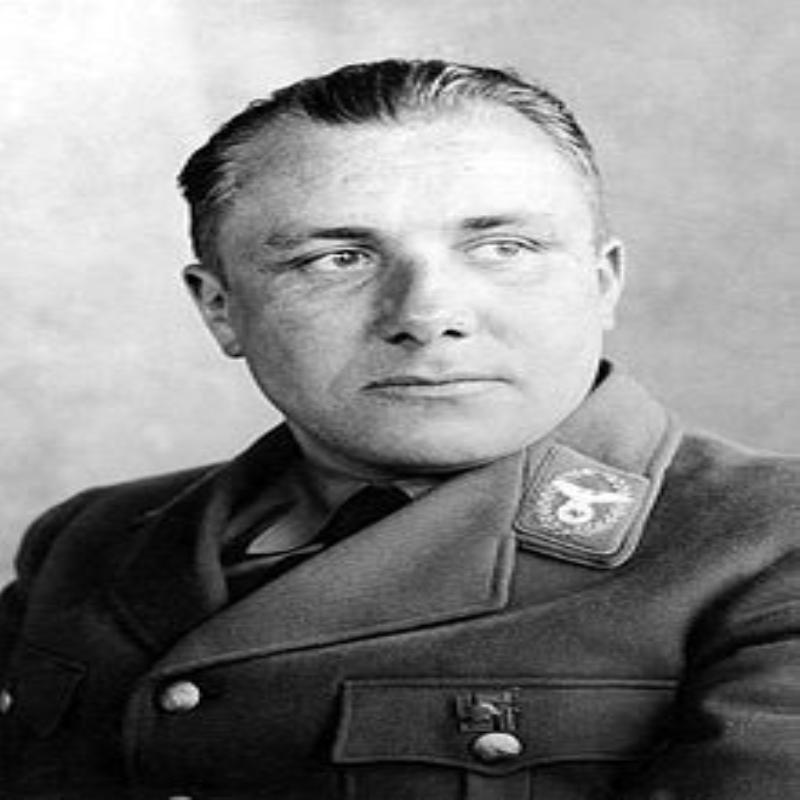
During the final months of the Third Reich’s existence Martin Bormann, “The Brown Eminence,” Secretary of the Nazi Party and Hitler’s personal factotum became the most feared man in the Nazi hierarchy. He had been Hitler’s personal assistant since April 1943, and closely guarded access to the Fuhrer. By 1945 he had become Hitler’s indispensable man.
An arrogant and vain man utterly impervious to the feelings of others he was formidably ambitious and worked tirelessly to undermine the other leading Nazi’s. He was determined to be the last Nazi standing and to be the Fuhrer’s successor. Given the circumstances it seems a strangely myopic ambition.
Hitler, who during his time in the Bunker would often be reduced to tears of either rage or sentimentality still believed that the Russian encirclement of Berlin could be broken.
Steiner’s perceived betrayal had temporarily shaken this belief but now he ordered the 12th Army under General Wenck to withdraw from the Western Front and link up with the 9th Army under General Heinrici and advance on Berlin. This strategy was actually General Jodl’s but he had couched it in such a way as to persuade an increasingly irrational Fuhrer it was his own.
On 23 April, he appointed General Wiedling commander of the Berlin garrison having ordered just the previous day that he be shot for dereliction of duty.
As the fighting above them drew ever nearer the peculiar life of those in the Bunker continued. Hitler held his daily military briefings, Generals came and went, and messages passed to and thro while all the time the constant drone of the ventilation system provided an eerie calm to proceedings.
After the frantic hours had passed Hitler would take his evening meal when he would often make time for his young secretaries and concern himself, with their welfare. On other occasions he would rage violently against the Jews blaming them for everything.
Two years earlier at a dinner party Maria von Schirach, the wife of the leader of the Hitler Youth and future Gauleiter of Vienna Baldur von Schirach, had said to him: “I have seen a train full of Jewish women. These people they looked terrible. I’m sure they are being badly treated. Do you know about this?”
A silence descended and after a long the pause and with the colour drained from his face he replied: “You are sentimental Frau von Schirach. What have Jewish women to do with you! You must learn to hate”. He then made his apologies and walked out.
Frau von Schirach is the only person known to have raised the question of the fate of the Jews with Hitler personally. She was never invited to dinner again.
His behaviour by this time was so irascible and unpredictable that people feared being in his presence and they certainly weren’t inclined to speak their mind or keep him properly informed of events. The facts were instead made to fit.
On 20 April, he celebrated his fifty-sixth birthday with a small party, but it was evident to everyone present that he wasn’t a well man. His skin lesions had got worse, and he was also displaying signs of severe physical deterioration with the left side of his body often seen to be visibly shaking.
He was already being treated for an irregular heartbeat and is believed to have contracted syphilis either from a Jewish prostitute during his time in Vienna or whilst he was serving as a soldier in the Great War, and it was an illness he would often rant about and refer to as the Jewish disease. Whatever his true physical condition his personal physician, Dr Theodore Morrell ensured he was suitably medicated.
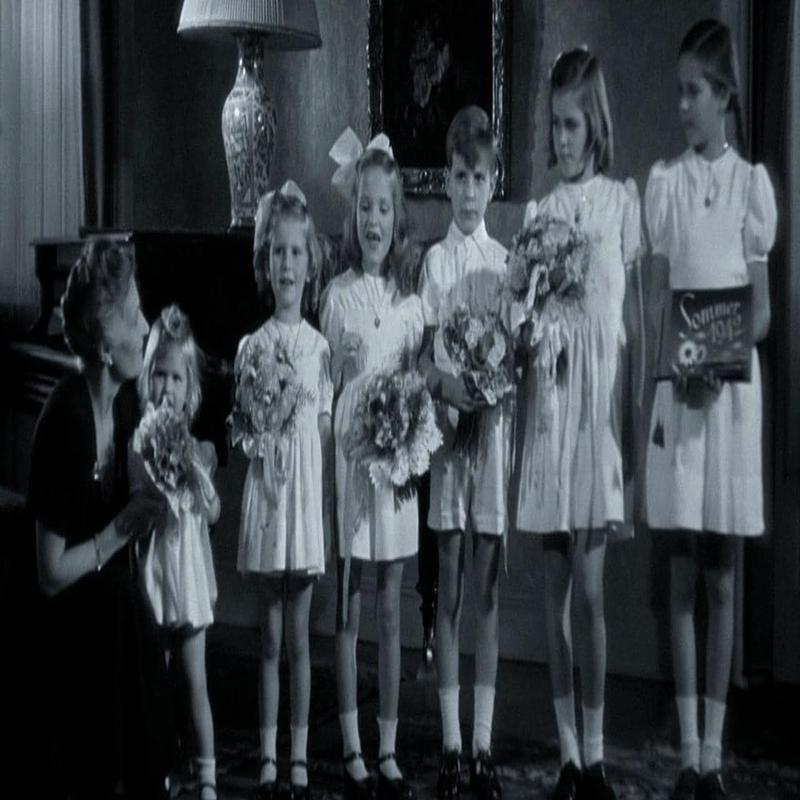
By late March 1945, Magda Gobbels had joined her husband Josef in the Bunker along with her six young children. Hitler enjoyed the company of the children in particular that of four-year-old Heidrun who he would balance on his knee and regale with stories of the great warriors and Germanic heroes of the past.
The children in their innocence provided some relief from the atmosphere of despair that pervaded the gloomy and claustrophobic environs of the Fuhrer Bunker and Hitler delighted in their presence. He was less keen however on their mother, the fanatical and strong-willed Magda and her never less than obsequious husband.
Indeed, Hitler would often disappear into his private chambers alone, refuse to see anyone and not emerge for many hours room on end. The only person who would be permitted access to him was Eva Braun.
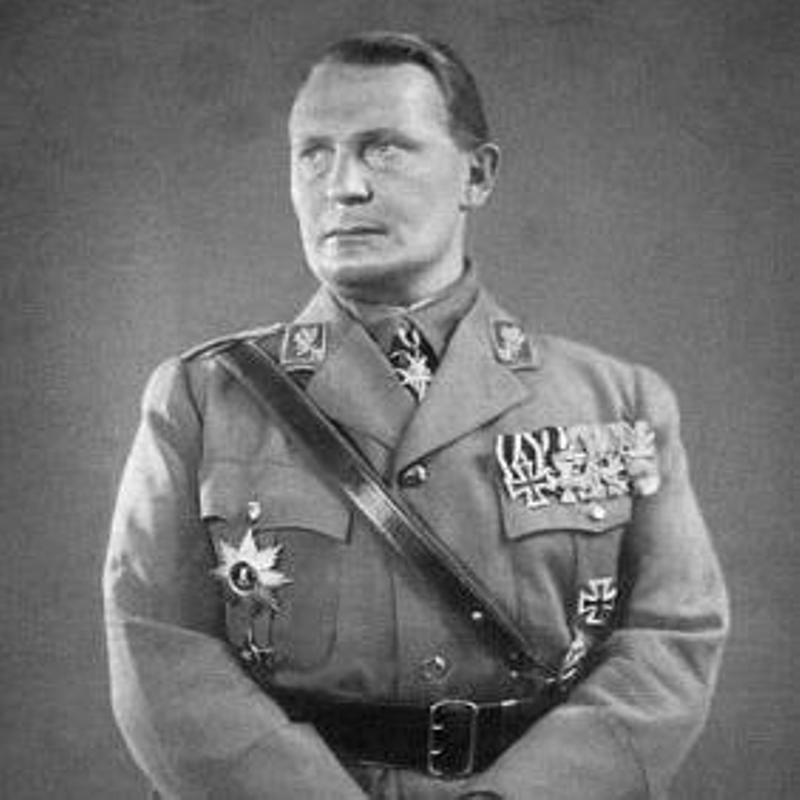
On 23 April, a carefully worded telegram addressed to the Fuhrer from Reich-Marshal Hermann Goering was intercepted by Martin Bormann. In it Goering informed Hitler that he had invoked his secret decree of 1941 that stated if the Fuhrer became incapacitated and was unable to carry out the functions of his office then he, Hermann Goering, was to take over leadership of the Reich. Since Hitler had decided to remain in Berlin and the city was encircled his ability to run the country had so diminished that he felt obliged to take over the reins even if this transference of power may only be temporary.
By the time Hitler received the telegram Bormann had altered it sufficiently to make it appear a litany of lies and betrayal and consequently he went into one of his by now characteristic rages. He ordered that Goering be immediately arrested and stripped of all his authority. Bormann wanted the Reich Marshal shot, but Hitler declined to go that far.
Two weeks earlier on 12 April a wave of optimism had swept through the Bunker upon learning of the news that President Franklin Delano Roosevelt had died.
An excited and animated Josef Goebbels now rushed to inform the Fuhrer that it was fate that it had been written in the stars that Roosevelt would die. It had been Roosevelt and Stalin who had demanded unconditional surrender, now he was dead the Western Allies would join Germany to oppose the Bolshevik horde. The Third Reich would now be the bulwark that would save western civilisation from barbarism. It was a false dawn, and the optimism was short-lived but it was an example of the delusional thought patterns that pervaded the corridors of the Fuhrer Bunker so far beneath the earth’s surface. Instead it was to be another kind of news that truly shook those so detached from reality.
On 26 April, a BBC radio broadcast revealed that Heinrich Himmler was trying to broker a separate peace agreement through a Swedish intermediary Count Folke Bernadotte. In fact, he had been trying to negotiate just such a settlement since the previous year and had been offering to release Jewish inmates from the Concentration Camps to secure it.
Hitler could not believe it and he took some time to absorb the news. If Der Truer Heini was willing to commit treason, then there truly was no one left alive who would not betray him.
He swung from rage to utter despair and back to rage again and he was often close to tears as he accused his Generals of treason, condemned the army as cowards, and accused the German people of being unworthy of his greatness. There could be no mercy for Himmler and the order was issued for his execution, but he had already gone into hiding.
Upon hearing of his master’s betrayal Himmler’s representative in the Bunker, Hermann Fegelein, Eva Braun’s brother-in-law, fled. Hitler ordered his immediate arrest and search parties were despatched to find him. He he was eventually found hiding in his Berlin apartment with his Hungarian mistress. Dishevelled, half-naked, and heavily intoxicated he was returned to the Bunker along with a suitcase crammed with money and Eva Braun’s jewellery.
After a cursory court-martial he was sentenced to death and shot despite the special pleading of Eva Braun who begged Hitler to cancel the order for the sake of her sister. It was the only time she ever asked anything of him.
Two days after the news of Himmler’s treason General Wenck informed Field-Marshal Keitel that the German Army was in retreat and that there was now no prospect of Berlin being relieved.
The German’s now only had 45,000 troops, many of them foreign SS Units, 40,000 Volksturm (Home Guard) and the Hitler Youth to defend the city against 1,500,000 Russians with tanks, heavy artillery and total command of the air.
Later that afternoon General Krebs informed Keitel that they only had enough ammunition to maintain the fighting for a further 48 hours. Regardless, Hitler forbade any surrender.
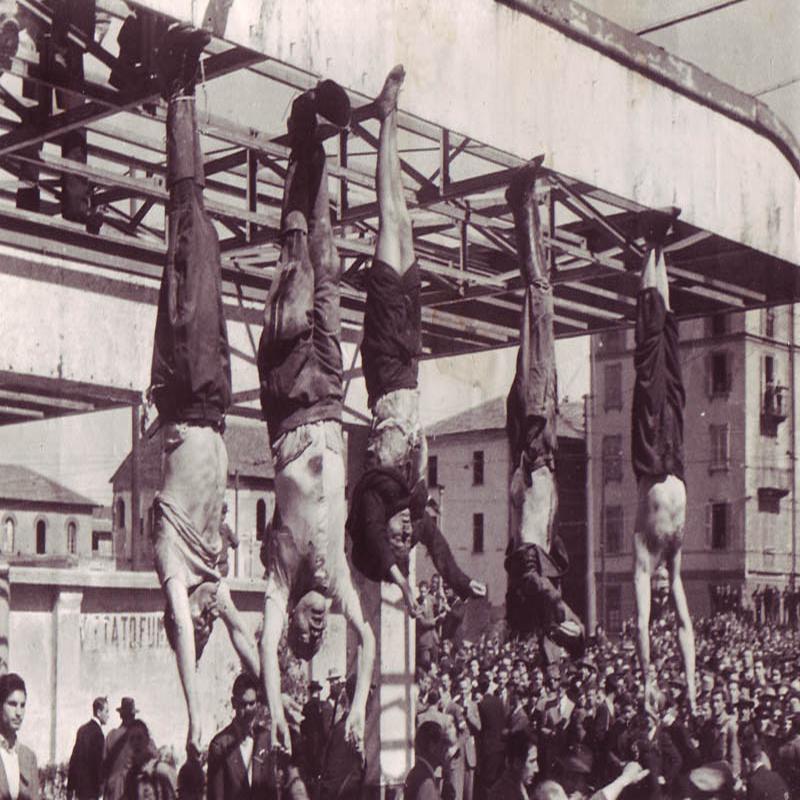
On 29 April, Hitler heard of the fate of his ally Benito Mussolini who had been captured by Italian partisans whilst trying to cross over the border into Switzerland disguised as a German soldier. He had been summarily shot along with his mistress Clara Petacci and a number of associates, their bodies were then taken to Milan and strung up by their heels in a garage forecourt to be abused and spat upon by the very people he had governed for the previous twenty five years. Hitler would never allow himself to be made such a spectacle of so he would take his own life and ensure that his remains were utterly destroyed.
He had intended to die in appropriately Wagnerian style by having his plane blown up over the Baltic Sea like a Viking warrior on his journey to Valhalla, but he now feared his body might be recovered from the wreckage or that his plane might be shot down and himself captured. So, he would instead bite upon a cyanide tablet and shoot himself but first he tested the effectiveness of the cyanide on his Alsatian dog, Blondi. It worked but the subsequent death of his beloved Blondi upset him greatly.
Eva Braun insisted that she die alongside him, and Hitler did nothing to dissuade her thinking it only right and proper that she do so while also wanting to prevent details of his personal life becoming public after his death.
On the morning of the 30 April, he informed his inner circle that he intended to take his own life and gave orders that his body and that of his wife should be burned until no trace of them remained. He also gave permission for those within the Bunker to make a break-out that night. The Berlin garrison however was still forbidden to surrender. He and Eva Braun then retired to his study.
He was disturbed only once when a frantic Magda Goebbels banged upon his door begging him to open it. When he did so she pleaded with him not to take his own life but instead to flee to Berchtesgarden in Bavaria from where he could rally the German people and continue the war. He listened patiently but said nothing before slowly closing the door. The hysterical Magda with tears rolling down her cheeks had to be physically removed.
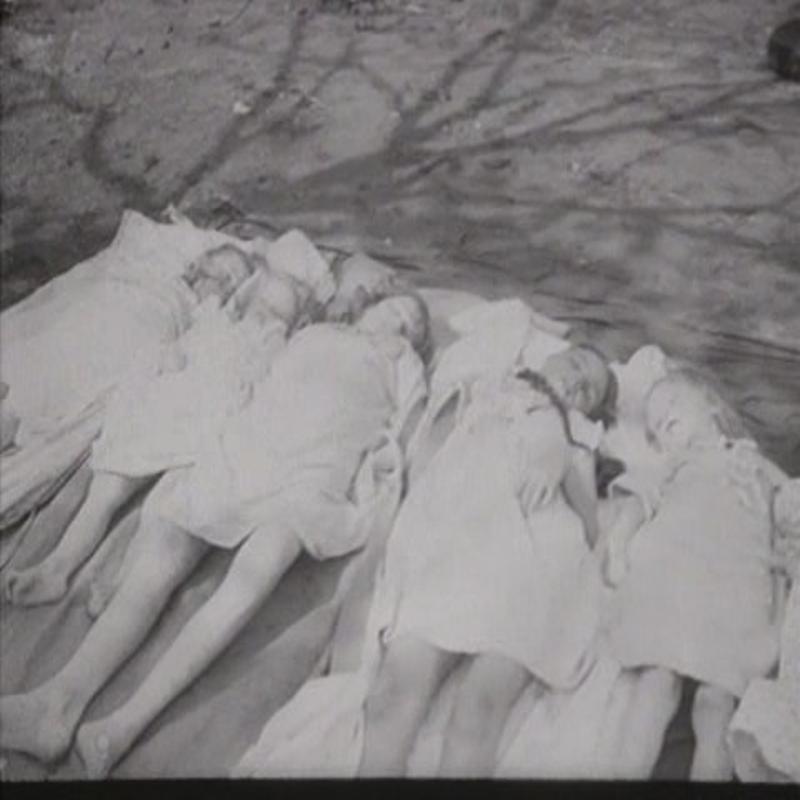
She, along with her husband Josef would later replicate the Fuhrer’s suicide but not before she had murdered their six young children.
Around 3.30 in the afternoon a loud gunshot was heard to come from Hitler’s study. No one dared enter for a time but when eventually they did, they found both Hitler and Eva Braun slumped upon the sofa. He had shot himself in the temple whilst she had taken a cyanide pill.
The bodies were taken to the Reich Chancellery garden which was under heavy shelling and with little ceremony were hastily doused in petrol and set alight, the remains continued to be set alight until no visible trace remained.
By now the Russians were only some 200 metres from the Fuhrer Bunker which was being defended not by Germans but by Frenchmen from the SS Charlemagne Division. The Third Reich was in its death throes, but its architect had gone before it, and it only remained for those he left behind to make their escape as best they could.
With Hitler gone those within the Bunker were at last free to smoke whilst many others took the opportunity to get royally drunk with Senior Officers their uniforms unbuttoned or discarded entirely to be seen simply sitting around drinking champagne and playing cards as if nothing was happening but as night descended plans began to be made for the breakout.
At 3.15 in the morning of 1 May, Martin Bormann telephoned Grand-Admiral Karl Doenitz to inform him that Adolf Hitler was dead and that in accordance with his last wishes he was to be appointed Reich President and Chancellor. Meanwhile, small groups of people began breaking out of the Fuhrer Bunker, others rather than risk their lives remained to be taken prisoner by the Russians. Some such as General Hans Krebs and General Wilhelm Burgdorf shot themselves.
Martin Bormann fled the Bunker in a group including the Leader of the Hitler Youth Artur Axmann, the SS Doctor Ludwig Stumpfegger and Hitler’s pilot Hans Bauer. They were accompanied by a small number of troops and a Tiger tank but they did not get far and were held up at the Wiedenhammer Bridge across the River Spree where the tank was destroyed.
Fearing the worst, Axmann now decided to leave the group and make his way through the Russian lines on his own as best he could but upon encountering a Russian patrol was forced to retrace his steps. He was later to describe how he stumbled across the bodies of his previous companions whom he presumed were dead but that he did not have the time to check and make sure.
In 1972 bodies were discovered at a site less than 50 yards from where Axmann described having seen the bodies but there remained some doubt as to whether they were the remains of Martin Bormann until 1998 when DNA testing ordered by the German Government confirmed them to be so.
On 2 May, General Wiedling surrendered the Berlin garrison unconditionally to the Russians and the insane, delusional, Wagnerian melodrama of the Fuhrer Bunker came to an end.
A week later on 8 May 1945, Grand-Admiral Karl Doenitz surrendered Germany.
Tagged as: Modern
Share this post:





